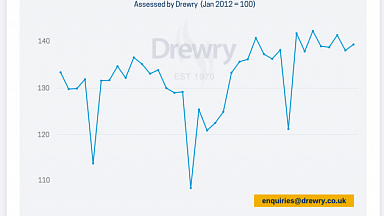In the conditions of a difficult external background, the increase in the value and physical volumes of exports will not be able to become the main factor in the sustainable growth of the economies of the EDB member countries. In the first months of 2024, short-term indicators of economic activity and production indicators indicate the continuation of high GDP growth rates in the region. Countries continue to rely on an increase in domestic demand in their development, including those stimulated through the implementation of national development projects. Examples of such investments include an increase in government investments in Armenia, the implementation of import substitution projects in Belarus and Russia, and the implementation of development programs in the engineering industry of Kazakhstan, the Kyrgyz Republic and Tajikistan — in the energy sector. Further expansion of regional economic cooperation will contribute to the accelerated development of industries in which countries have comparative advantages, and this will increase the productivity of the region as a whole. Increasing the efficiency of economies will remain an important source of growth. Investments in the social sector, including medicine and education, contribute to it, along with maintaining responsible macroeconomic policy. The experience of recent years testifies to the significant potential of the region’s economy for sustainable development.
Republic of Armenia
The pace of economic growth has accelerated. In February, the foreign trade balance turned positive. The decline in consumer prices slowed in March. The Central Bank of Armenia remains committed to a systematic easing of monetary policy, reducing the financing rate by 0.25 percentage points to 8.5%.
The Republic of Belarus
The Belarusian economy continues to grow in 2024 thanks to industry and trade. The growth driver is domestic demand, primarily final consumption. Investment activity has decreased. Price regulation restrains inflation, while inflationary pressures persist against the background of rising wages and credit growth.
The Republic of Kazakhstan
Economic growth is supported by high investment activity. Inflation is steadily slowing down, which allows the National Bank to continue reducing the base rate. The state budget surplus was formed due to an increase in non-tax revenues and the volume of transfers from the National Fund.
Kyrgyz Republic
High economic activity in early 2024 is due to strong investment and consumer demand. Inflation is within the target range, while inflation risks remain. The National Bank of the Kyrgyz Republic left the discount rate unchanged in order to keep inflation in the target range of 5-7% against the background of increased consumer demand. The state budget surplus was formed against the background of increased tax revenues from foreign economic activity.
Russian Federation
The Russian economy is growing steadily with the support of budget momentum and credit resources. The possibilities for expanding output are still limited, both on the part of production facilities and on the part of the workforce. Inflation has slowed down, but remains at elevated levels. Given the predominance of pro-inflationary factors, the Bank of Russia has left the key rate unchanged, keeping monetary conditions tight.
The Republic of Tajikistan
Consumption, investment and exports continued to grow at a rapid pace in January — February 2024. The foreign trade deficit decreased. Inflation slowed down due to the restraining influence of the stable exchange rate of the somoni and the weakening of external inflationary pressure. The state budget surplus in January of this year remained at the level of January 2023.



